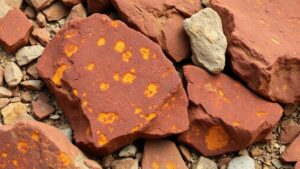How to Pan for Gold: A Step-by-Step Guide for Beginners
How to Pan for Gold: A Step-by-Step Guide for Beginners
Panning for gold is not only an exciting hobby but also a potential way to discover precious metals. This guide offers a comprehensive approach for beginners, detailing the necessary tools, techniques, and safety measures you need to effectively pan for gold.
Understanding Gold Panning
Gold panning is the process of separating gold from other materials by using a pan filled with water and sediment. This method is popular due to its simplicity and low cost. According to the United States Geological Survey, gold panning has historical significance, dating back to the 1848 California Gold Rush, where many individuals sought their fortune in rivers and streams.
Required Tools and Equipment
Before you start panning for gold, it is essential to have the right tools. Here are the basics:
- Gold Pan: A circular, shallow metal or plastic pan with sloped sides. A 14-inch pan is ideal for beginners.
- Sluice Box: Used for more advanced panning, it helps separate larger amounts of sediment.
- Classifier: A screen used to sift out larger rocks, helping you focus on finer materials.
- Snuffer Bottle: A small bottle with a suction mechanism to collect gold flakes.
- Shovel and Trowel: For digging through sediment and gravel.
Investing in quality gear can enhance your gold panning experience and increase your chances of success.
Choosing the Right Location
The selection of a location is critical for successful gold panning. Aim for places where gold is likely to accumulate, such as:
- Inside bends of rivers where slower currents allow sediment to settle.
- Behind boulders or in gravel bars where water flow is disrupted.
- Areas downstream from known gold mining sites.
Research local geology and consult online resources or local miners to identify promising locations.
The Step-by-Step Panning Process
Now that you have your tools and location, follow these steps to pan for gold:
Step 1: Gather Sediment
Use your shovel to collect sediment from your chosen location. Aim for about half a pan full of material to avoid overcrowding the pan.
Step 2: Classify the Material
Using your classifier, sift through the sediment to remove larger rocks and debris. This step helps in concentrating your efforts on finer materials that may contain gold.
Step 3: Fill the Pan with Water
Submerge the classified sediment in your gold pan and add enough water to cover the contents. water helps in separating the lighter materials from the heavier ones.
Step 4: Start Panning
With a gentle, circular motion, shake the pan side to side. This movement will help the lighter material wash away while the denser gold remains at the bottom.
Step 5: Repeat the Process
Continue to add water and shake the pan until only the heavier materials remain. This process may take a few minutes of practice to master. Be patient and persistent.
Step 6: Collect Your Gold
Using a snuffer bottle, carefully extract any visible gold flakes from the pan. Store them safely in a small container to preserve your finds.
Safety and Environmental Considerations
While panning for gold, it is crucial to adhere to safety and environmental guidelines:
- Check local regulations regarding panning; some areas may require permits.
- Practice Leave No Trace principles by cleaning up your site after use.
- Wear appropriate footwear and be aware of your surroundings to avoid slippery rocks.
Conclusion
Panning for gold offers an excellent opportunity to connect with nature and uncover hidden treasures. By following the steps outlined in this guide, beginners can navigate the process effectively. Remember, practice makes perfect. Enjoy the thrill of the hunt, and who knows? Your next pan might reveal a piece of gold that sparks your interest in this enduring adventure.
Actionable Takeaways
- Gather the necessary tools before heading out to pan for gold.
- Choose your location wisely based on current geological data.
- Practice the panning technique to increase efficiency and success.
With dedication and practice, the art of gold panning can lead to rewarding experiences and perhaps even valuable finds.


